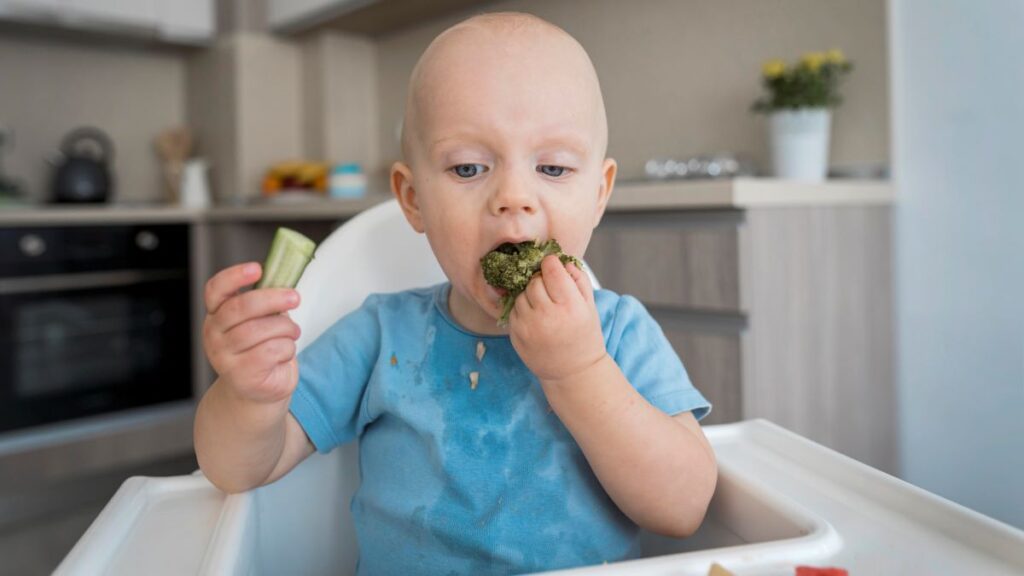Navigating Coughing and Choking in Babies: A Guide for Parents
By Gabrielle Finora Nutritional Sciences, Cornell University ’24
One of the most troubling sounds to any parent or caregiver is your child coughing or gagging while eating or drinking. You may feel it’s necessary to take action and dislodge whatever is in your child’s throat. While it can be distressing to hear this, it is normal for children to cough or gag during the first few weeks of introducing solid food. When you start feeding your child solids, their gag reflex is farther forward in their mouth and more sensitive. This means coughing and gaging are much more common in the early months. They will not gag as much as the reflex moves toward their throat as they age.
You may have heard that children are the best regulators of their hunger and thirst cues. Coughing and gagging are no different. Your baby may be coughing or gaging because they don’t like their food or have too much in their mouths (or both). Some food may have gone down the wrong pipe, or maybe they need some water. If your baby is coughing, it is better to let them work it out on their own. A good tip is to count to ten before intervening. However, if your child is choking, it is imperative to know the signs and act quickly. Here is how to tell if your baby is coughing or if they need your help.
Your baby may be coughing or gaging if they:
- Are making noise (coughing, etc.)
- Open their mouth and stick out their tongue
Your baby may be choking if they:
- Look alarmed
- Make high-pitched sounds while breathing or silent
- Turning blue or purple
A good way to remember the difference between coughing and choking is:
“Loud and red, let them go ahead. Silent and blue, they need help from you!”
If your child is choking, you must act immediately. The object should only be removed from the mouth if it can clearly be seen. Blindly sweeping your fingers around may further lodge the food or object. A few back blows alternating with chest thrusts may help dislodge the object from their throat. Perform CPR and call 911 if they lose consciousness.
For more information on what to do if your child is choking, click this link to view a YouTube video From First Aid for Life that demonstrates how to help dislodge the object.
References:
Hammett, E. [First Aid for Life]. (2017, March 17). How to Recognize if a Baby is Choking [Video]. YouTube. https://www.youtube.com/watch?v=ZRp99WrVaRs
Lehman, P. (2018, February 5). Choking vs. gagging: What parents need to know when introducing solid foods to children. Children’s Wisconsin. https://childrenswi.org/newshub/stories/choking-vs-gagging-what-parents-need-to-know-when-introducing-solid-foods-to-children#:~:text=Whereas%20gagging%20involves%20a%20lot,you%20need%20to%20intervene%20immediately.
Tucker, R. (2019, December 4). Baby led weaning. worried about choking?. Baby Led Weaning Ideas. https://www.babyledweaningideas.com/worried-about-choking/
Photo source: Tucker, R. (2019, December 4). Baby led weaning. worried about choking?. Baby Led Weaning Ideas. https://www.babyledweaningideas.com/worried-about-choking/







